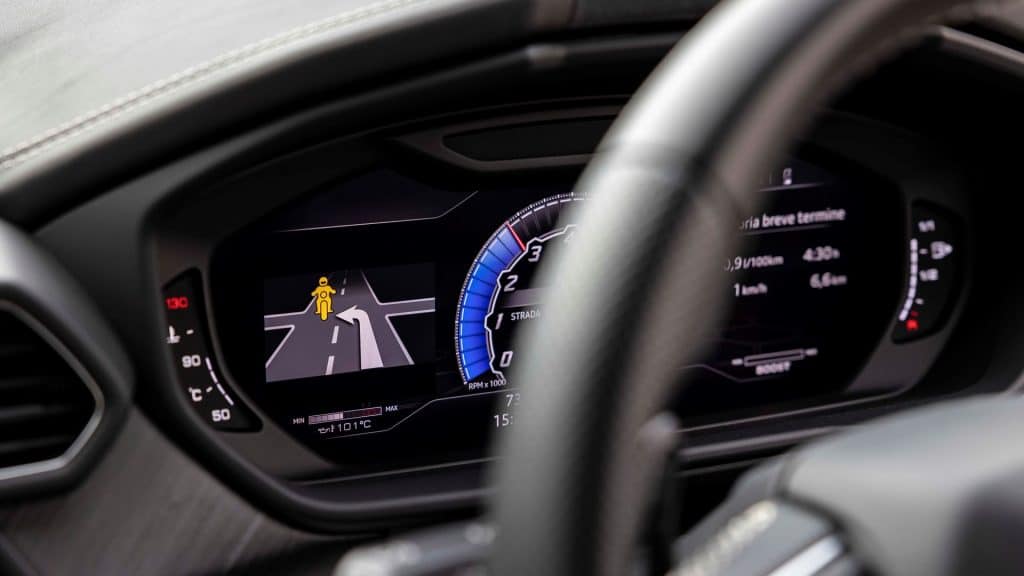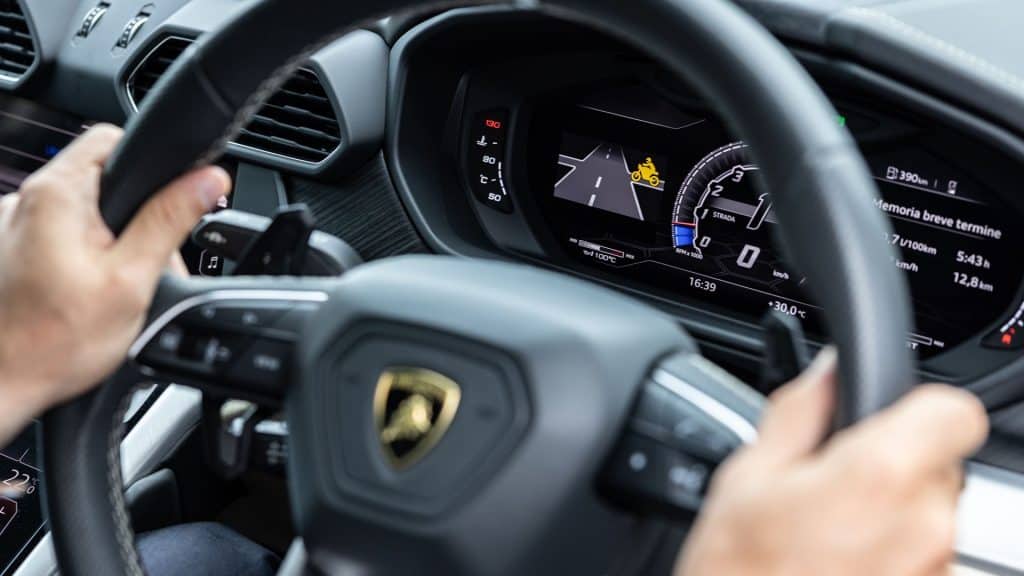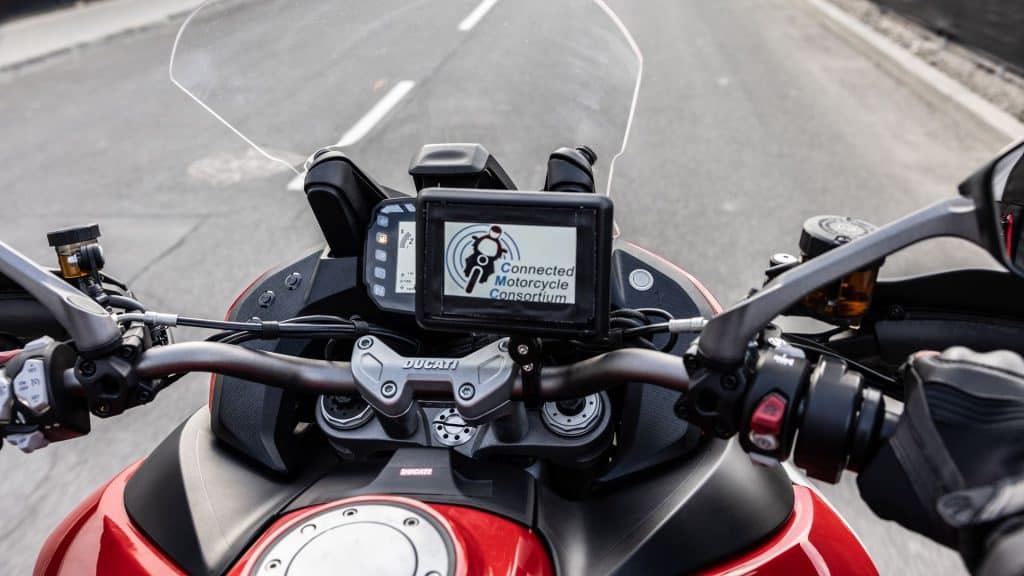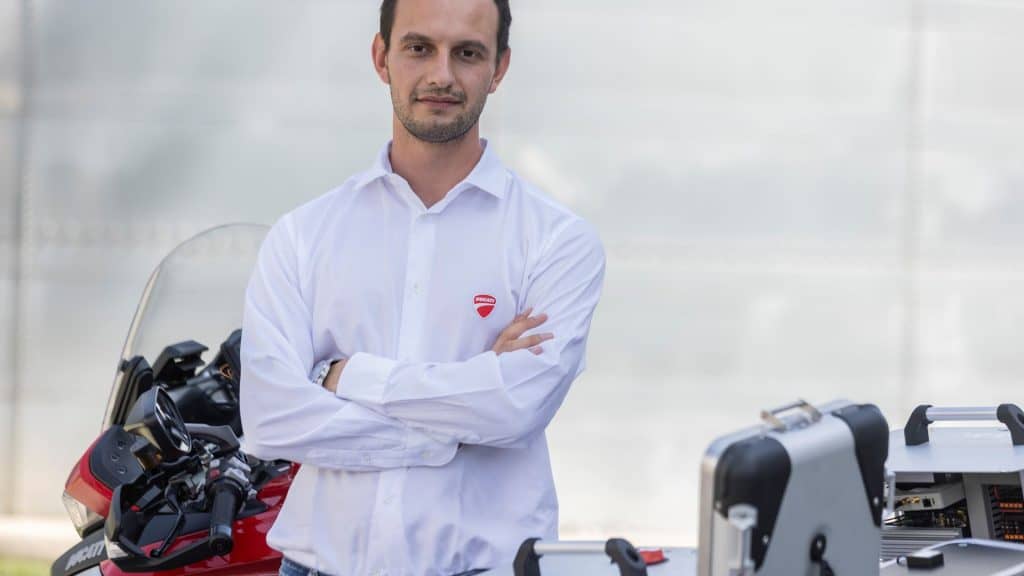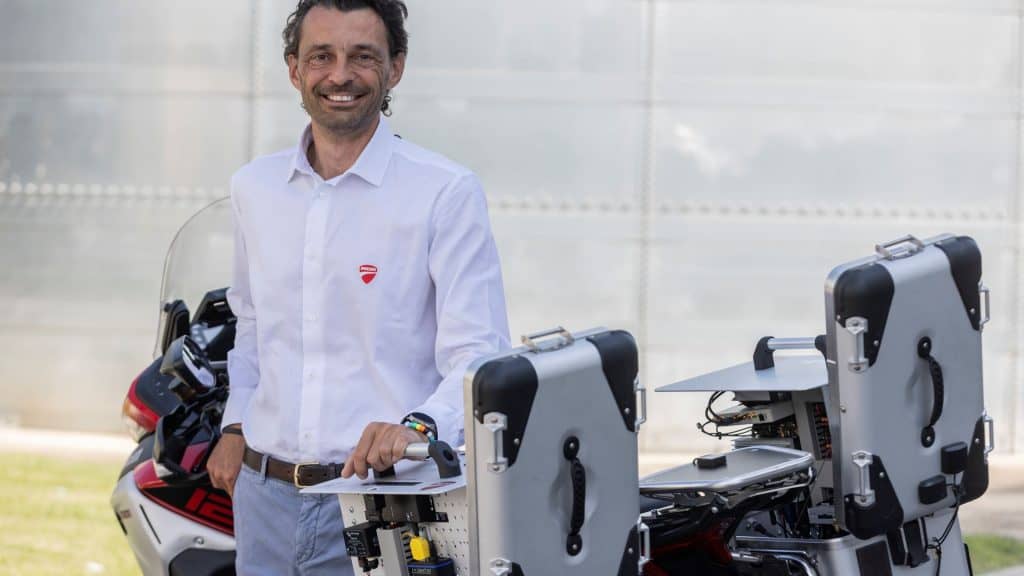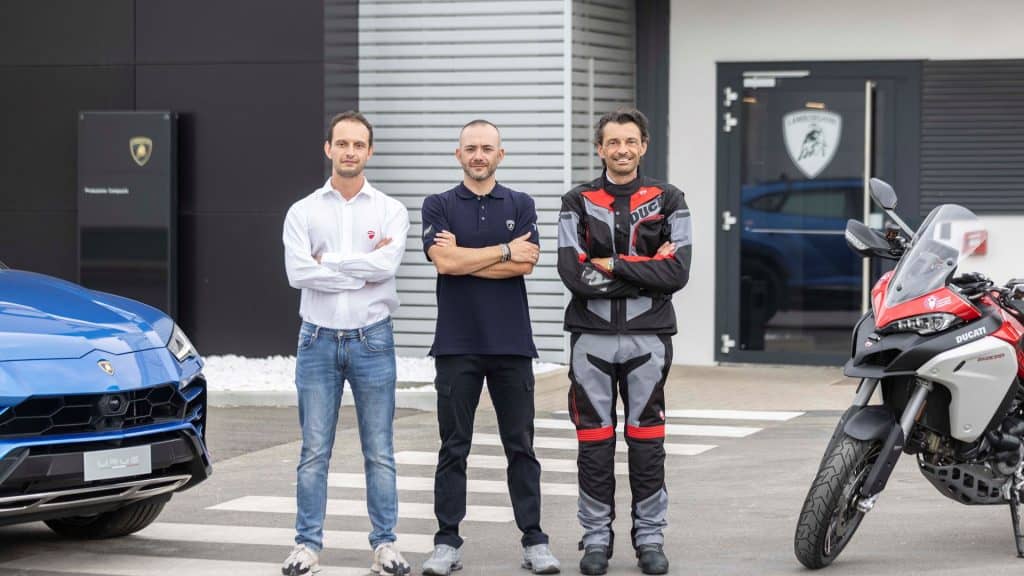Automobili Lamborghini and Ducati, two iconic Italian brands known for their excellence in the automotive and motorcycle industries, have joined forces to pioneer a groundbreaking motorcycle-to-vehicle communication system. This innovative technology aims to enhance the safety of motorcyclists on the road, marking a significant milestone in the evolution of connected mobility.
The collaboration between Lamborghini and Ducati was showcased at the Lausitzring race track in Germany during a demonstration event organized by the Connected Motorcycle Consortium (CMC). CMC is an international association of leading two-wheeled vehicle manufacturers, dedicated to integrating motorbikes into the future of connected mobility to improve rider safety.
Founded in 2016, CMC embarked on an extensive research journey, in which Ducati has been actively involved since joining the consortium in the same year. The initiative began with an in-depth analysis of the most hazardous accidents involving motorcycles and cars, focusing on their frequency and the severity of injuries sustained by motorcyclists. From this research, critical scenarios were identified where connectivity could play a pivotal role in reducing accidents and minimizing harm to motorcyclists.
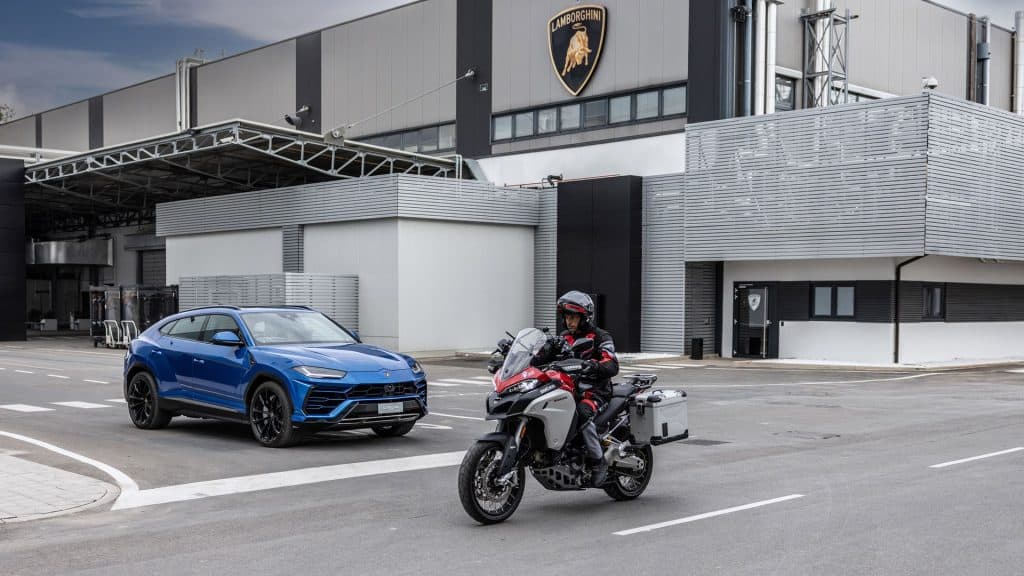
One of the primary objectives of CMC’s research was to reduce system reaction times to provide advance warnings to parties involved in potential accidents. In this context, Lamborghini’s support was instrumental during the trial phase, as they provided a Urus vehicle for use case simulations.
Ducati concentrated on addressing three of the most perilous accident scenarios:
- Intersection Movement Assist (IMA): This scenario simulates a situation where a motorbike approaches an intersection with limited visibility while a car arrives simultaneously from a secondary road, obstructing the motorbike’s view. The MVCS warns the car driver of the approaching motorbike, promoting cautious navigation of the intersection.
- Left Turn Assist (LTA): In this case, both the car and motorbike travel on the main road in opposite directions, with the car intending to turn left. The MVCS ensures that the motorbike, less visible than the car, is not overlooked by the car’s auxiliary systems. A warning signal is triggered when the car activates its turn signal.
- Do Not Pass Warning (DNPW): When a motorbike in a line of traffic attempts to overtake a larger vehicle in front, a potential hazard arises if there is a car ahead of the large vehicle preparing to make a left turn, hidden from the motorcyclist’s view. The MVCS detects the synchronized turn signals of both the car and the motorbike, warning the motorcyclist accordingly.
This groundbreaking technology is the result of collaborative efforts between Ducati and various suppliers, including Bertrandt for hardware development and Nfiniity for the operating system and algorithm development. A prototype equipped with an additional screen displays warning signals to the motorcyclist, alerting them to potential dangers.
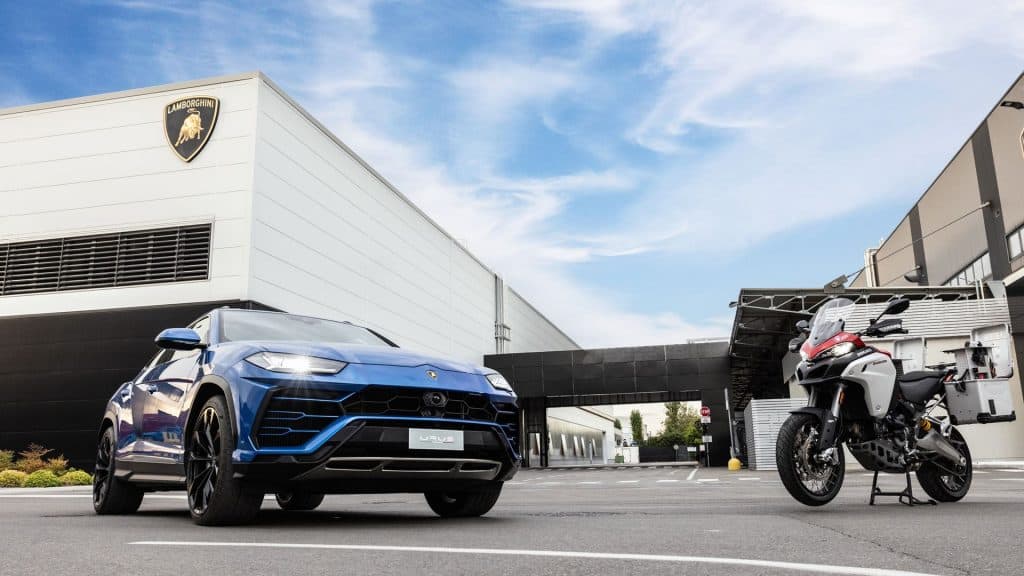
The Lamborghini-Ducati collaboration signifies a significant step towards integrating motorcycles into the connected mobility ecosystem, ultimately enhancing road safety for motorcyclists. The MVCS has the potential to revolutionize how vehicles interact on the road, reducing accidents and improving the overall safety of our roads.
As these two iconic Italian brands continue to push the boundaries of innovation, the world eagerly anticipates the widespread implementation of the Motorcycle-to-Vehicle Communication System, marking a pivotal moment in the evolution of transportation safety.


